
An exciting sense of anticipation filled the spacious playground after the rain. Children rushed out like a seed bursting from its pod. The ground with puddles quickly became a muddy mess. However, the teachers and parents who had gathered did not seem to stop the children. I could feel a relaxed and trusting atmosphere. After a while, Junko Kanai, a teacher at Hakone Kindergarten, called out, “Everyone, it has been raining until this morning. At Komagata Shrine, where we always go for a walk, there is a shrine dedicated to the deity Ame-no-Minakanushi. This deity is said to bring a welcome rain. The god must have cleared the sky after the welcome rain for all the good children to enjoy a fun day. Now, let’s do our best and cook a delicious meal. Ei-ei-ei-o!(Hurray!)”
Then, Junji Kosuzume, known affectionately as “Chun-Chun”, arrived with applause. He is an avid kayaker, cyclist, surfer and bonfire cooking specialist.
He asks, “Are you afraid of fire? It could be scary, but if you handle it well, it can warm you up and make a delicious meal.”
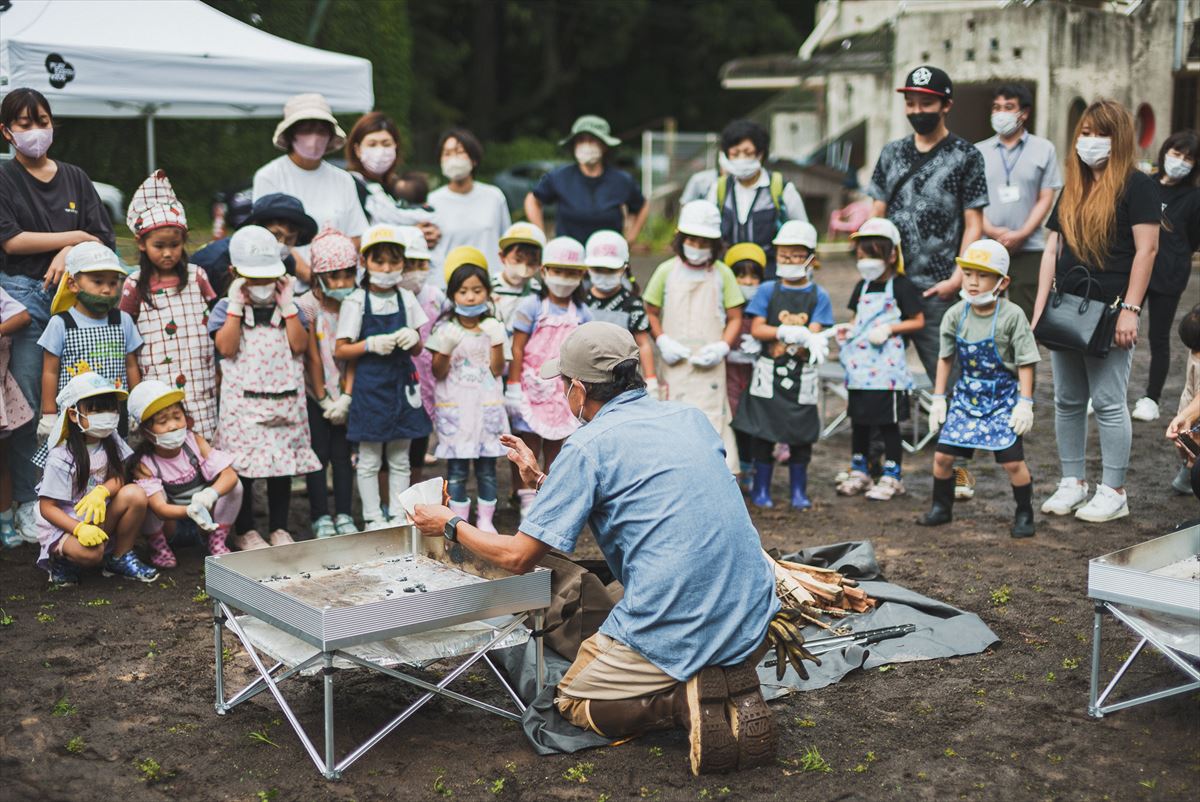

Then, taking a piece of paper out of his pocket, he lit it with a lighter and placed it on the fire pit. He immediately added dried cedar leaves on top, and when the flames flared, he added a twig and then a large piece of wood. Flickering like a living creature, the flames soon swallowed up the thick wood. The fire was built with magical skillfulness. The children were gazing intently at his expertise.

Junji Kosuzume, an outdoor coordinator, is the teacher for the fire building. He quickly starts a fire with magical skillfulness. The children are amazed and captured by his speed.
On the 8th of September 2022, “HAKONE TOWN x GOLDWIN HAKONE Outdoor Experience Class vol.1” was held at Hakone Kindergarten in Hakone Town, Kanagawa Prefecture. Five-year-old children from four preschools and nursery schools in Hakone Town gathered to experience bonfires.
GOLDWIN, which manages The North Face and other outdoor brands in Japan, and Hakone Town signed a Comprehensive Collaboration Agreement on Regional Revitalization in March 2022. The two parties have been working ambitiously to promote Hakone’s natural and cultural attractions incorporating outdoor activities. They aim to create programs that pass on these attractions to the next generation.
Chiemi Koyama, a teacher at Miyagino Nursery school, shared as she prepared for the bonfire. “Preschools, Kindergartens and nursery schools in Hakone would historically have had sweet potato digging in the autumn and bake them in the playground. However, due to the limited number of staff and our own unfamiliarity with bonfires, the children could only watch and could not actively participate. Teachers from the four schools came together to discuss this issue, and with GOLDWIN’s cooperation, we could hold the event this year.” Several meetings were held to discuss safety management, and the fire department also got involved. At the same time, smaller cedar trees were gathered from neighboring Hakone Town and chopped ready for the event.
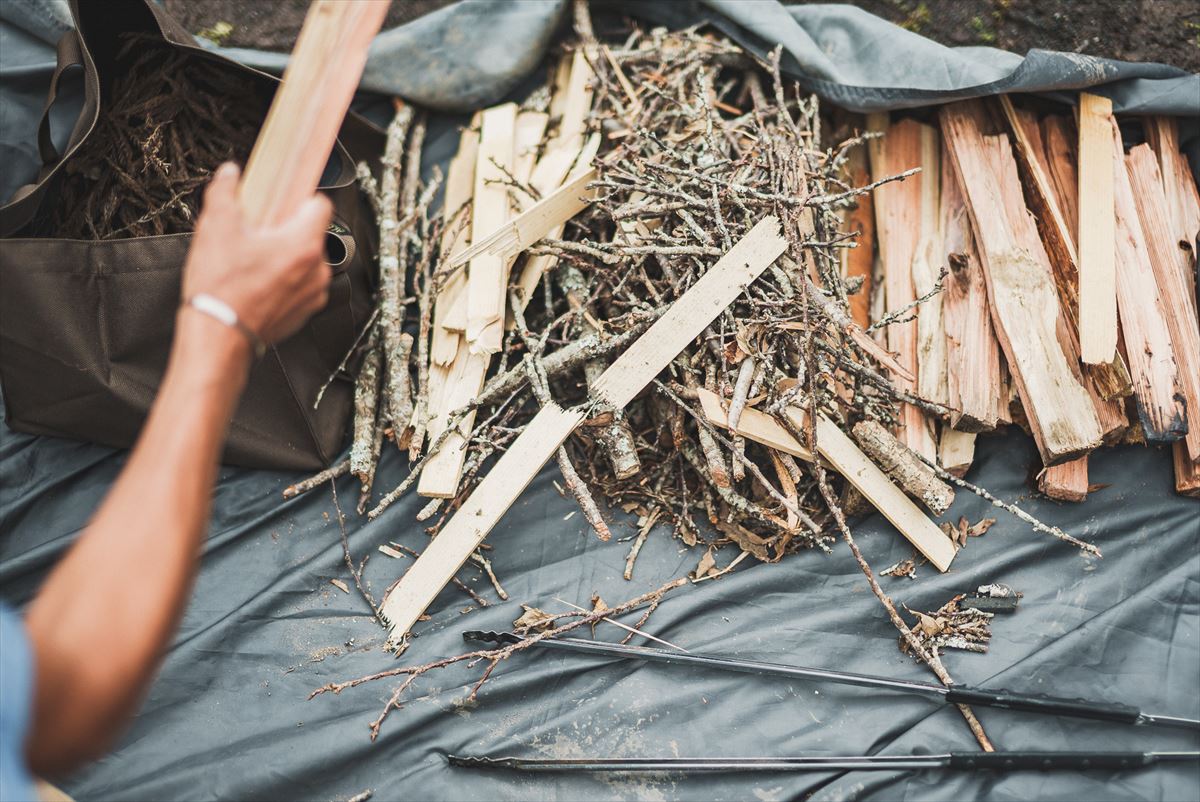
Firewood of different sizes is gathered. The fire is started with the smaller twigs and branches.
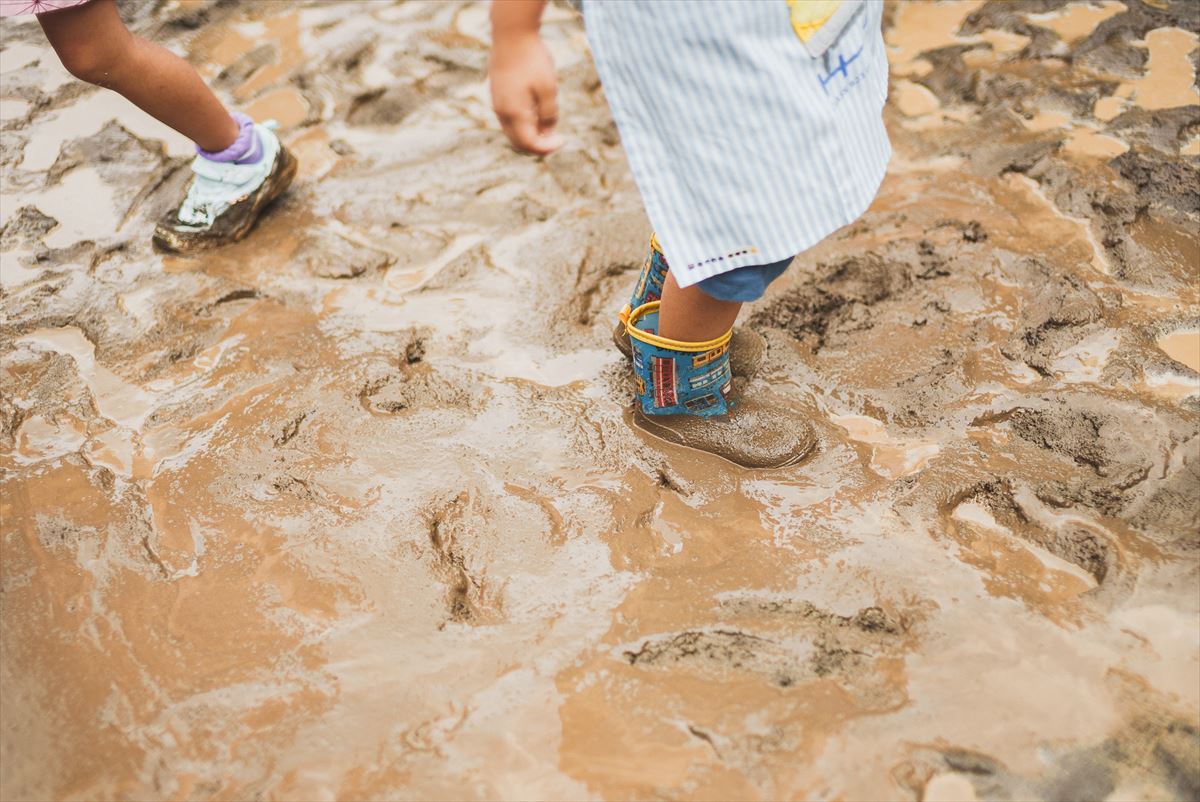
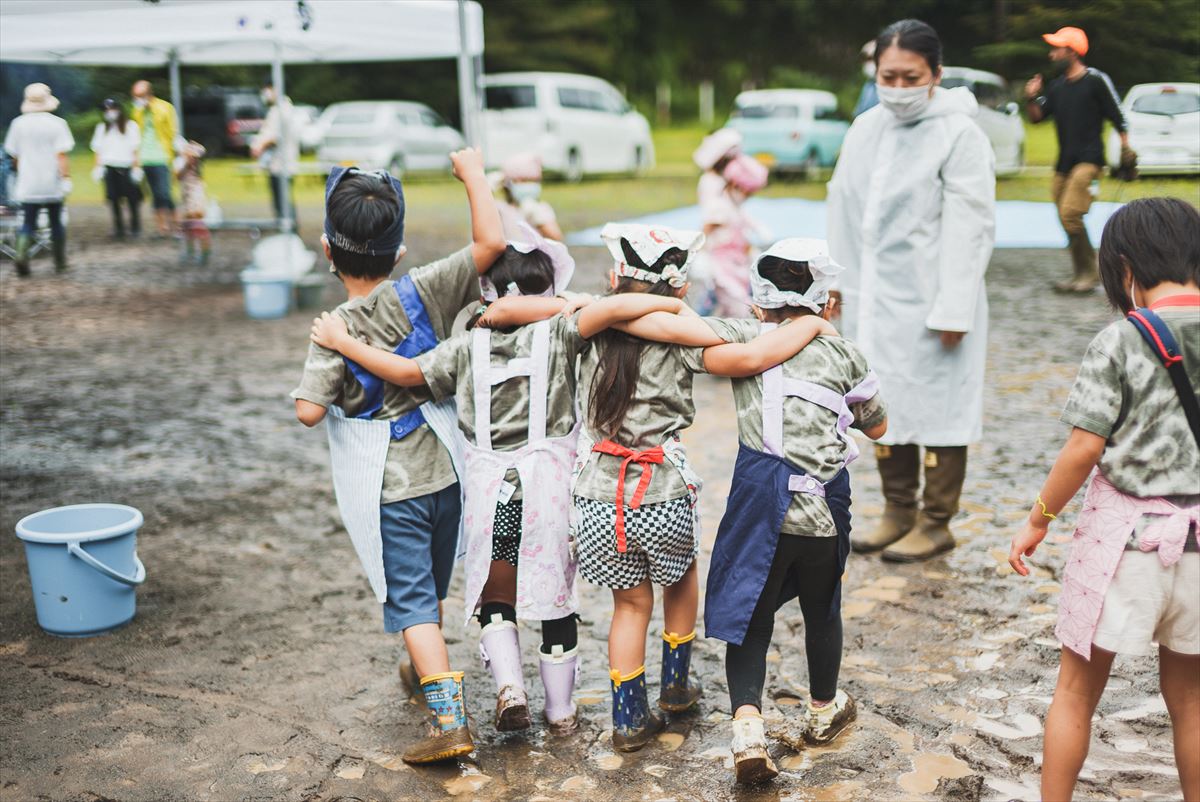
The smell of mud and bonfires spread on the school ground after the rain. This is a wonderful environment where a bonfire is possible.
“You can’t just start a fire by lighting a big piece of wood. Please light the fire in the following order: paper, cedar leaves, and twigs …….”
When asked if he had any tips, Chun-Chun smiled and carefully lit the fire again, drawing us all in with his brilliant skills.
“Just like us, bonfires are breathing. Do you know what oxygen is? If you tightly pile the firewood, the fire cannot breathe and will smother. Carefully observe the fire and add wood to give enough oxygen.”
Divided into five groups, the children and their guardians began to build their own fires. Then, the teacher placed a lit piece of paper on the fire pit, and the children carefully placed cedar leaves on top. Everyone was doing well after the two demonstrations. Then, some children called out, “Ms (referring to a teacher), you shouldn’t put so many big pieces of firewood on the fire. Chun-Chun placed only four!”
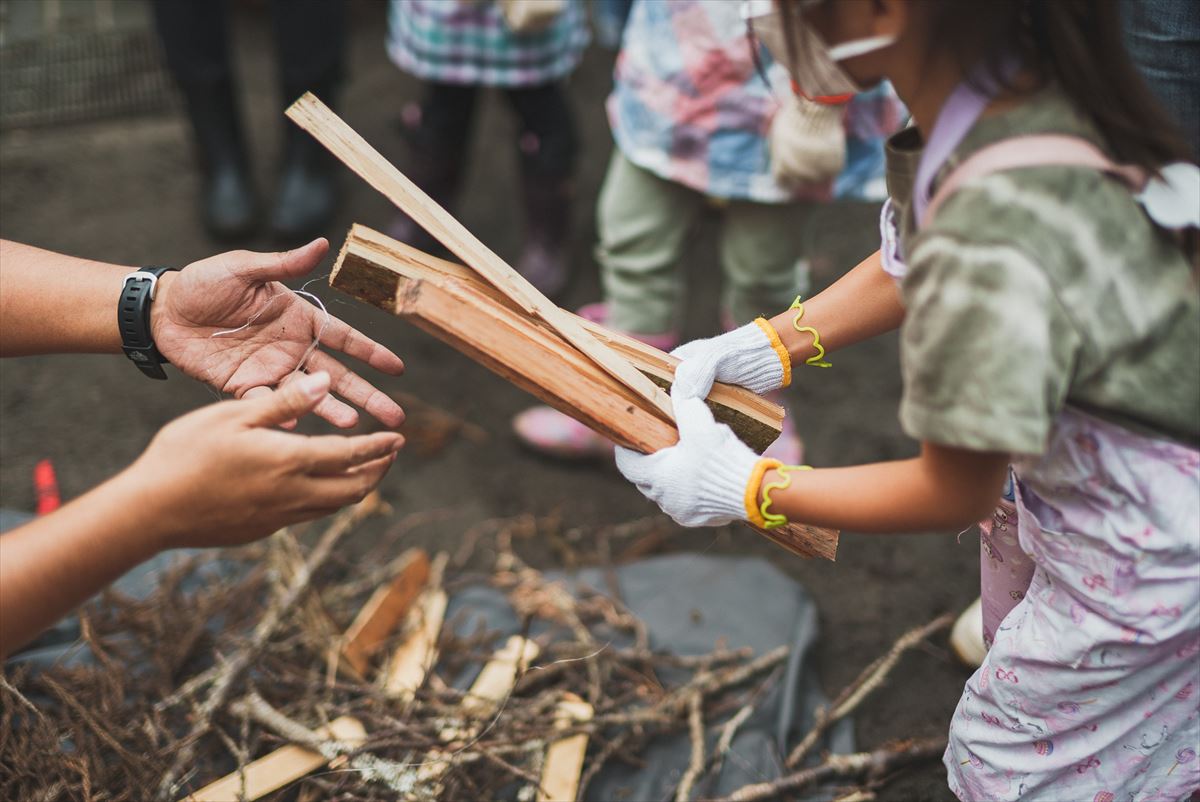
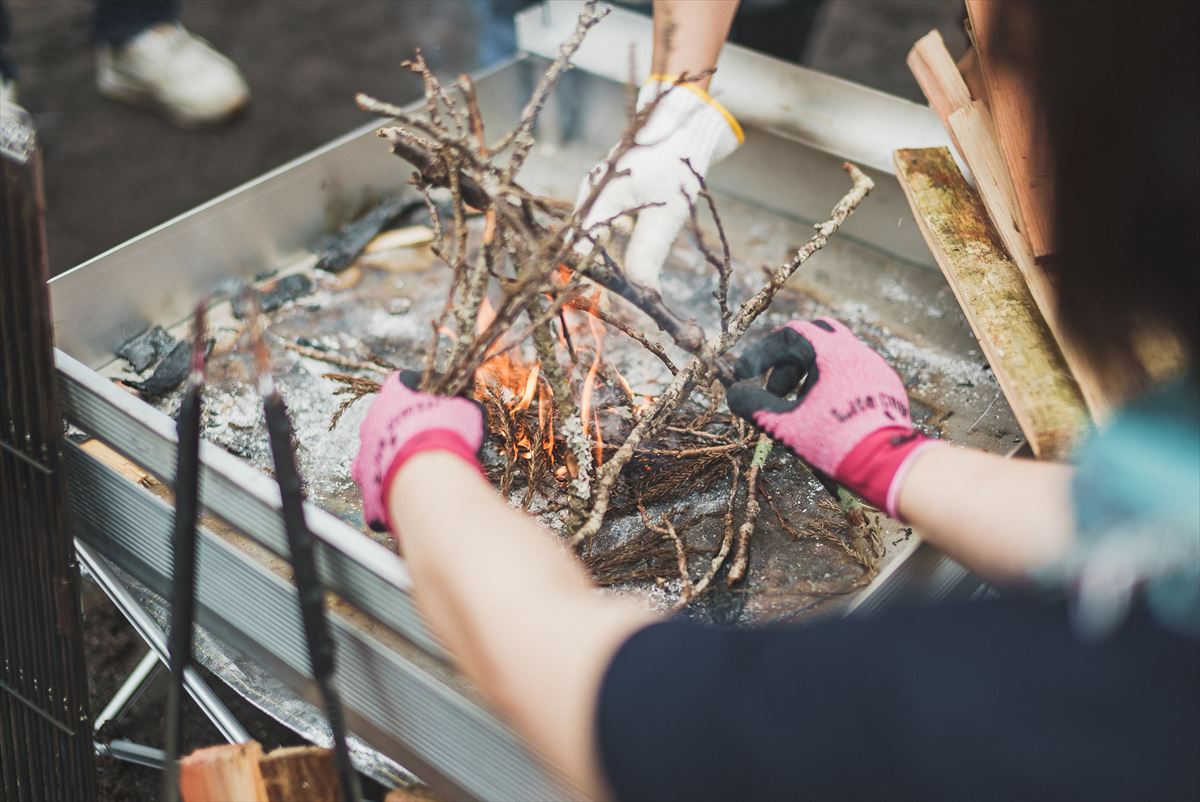
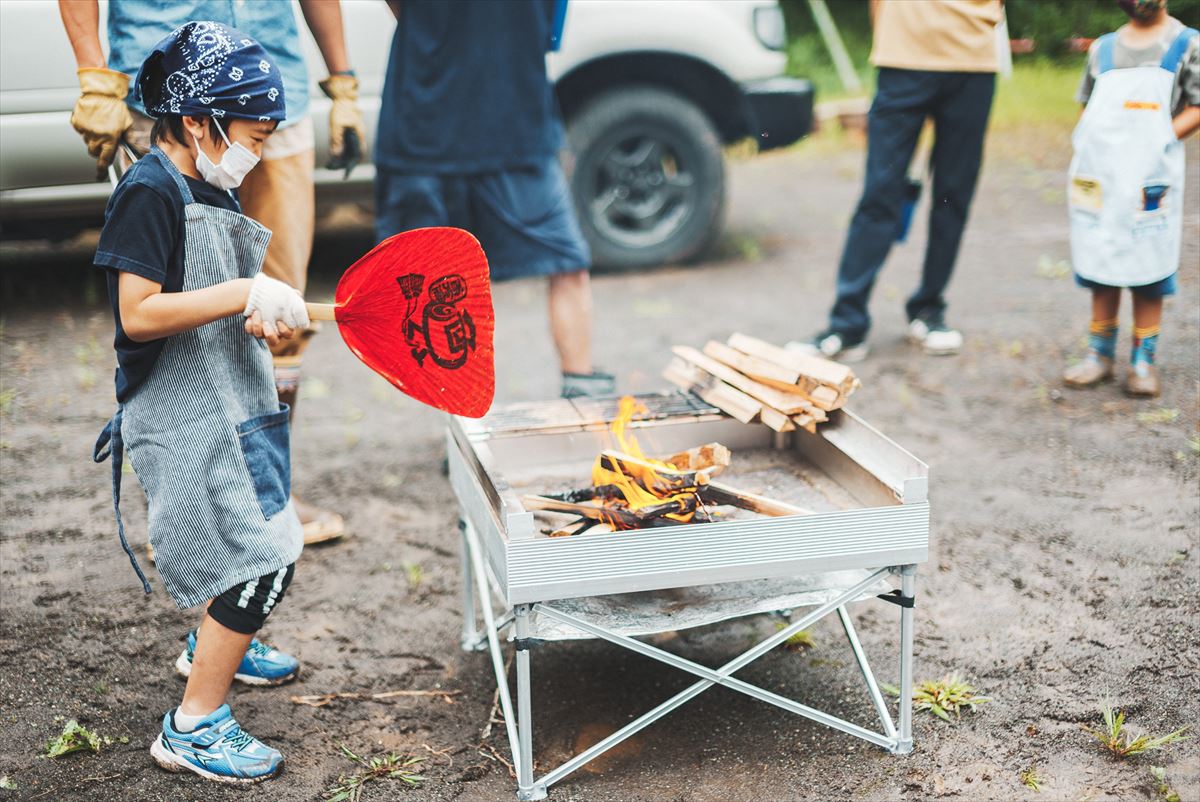
The children lighting the fire are fearless but also cautious.
The nostalgic smell of a bonfire fills the playground. The tinder and kindlings burn quickly with a freshly lit fire, forming a flame to build up. Then, the fire gradually works itself to the larger branches and logs.
“A strong fire is difficult to handle and unsuitable for cooking. After it burns up, the wood is charred and becomes embers. With embers, you can sear meat well; if necessary, you can make a high fire again by adding more wood. The point of a campfire is not to build it but to keep it controlled to a suitable size.”
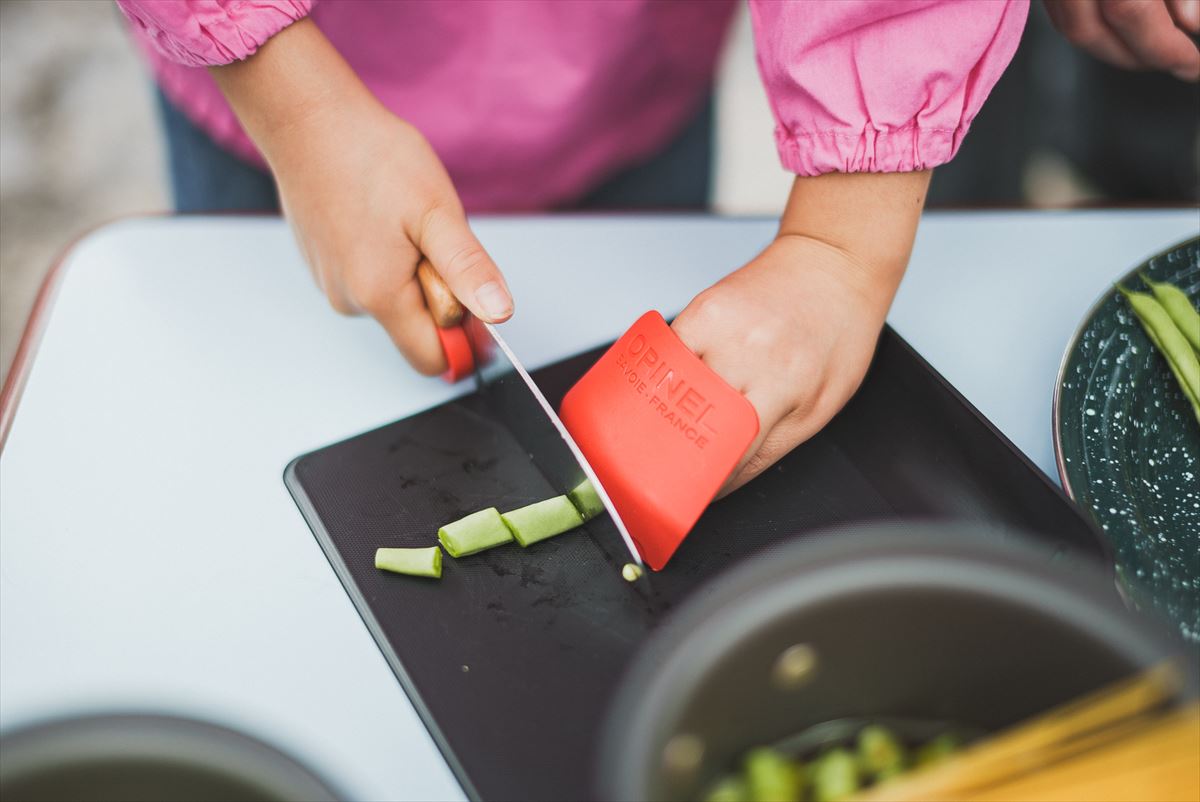
Then, he started to prepare the day’s menu, one-pot pasta. One-pot pasta is a popular camping menu in the U.S. It is a simple dish made by placing a pot of pasta and tuna in about 200 ml of water and a little olive oil over a fire and slowly heating them. Junji gave each person one pot, a knife with a finger guide, and a finger protector. “Now, let’s cut the French beans.”
After adding the French beans and cherry tomatoes, the pot was placed on the fire. As I observed, the children carefully arranged them from the windward side, avoiding sparks or smoke.
While looking on with anticipation, the golden soup started to boil. The children cheered. “The fire is smiling,” called out one. The fire has different strengths, so the pots are moved and positioned to ensure even heat. Each time, the children’s eyes followed.
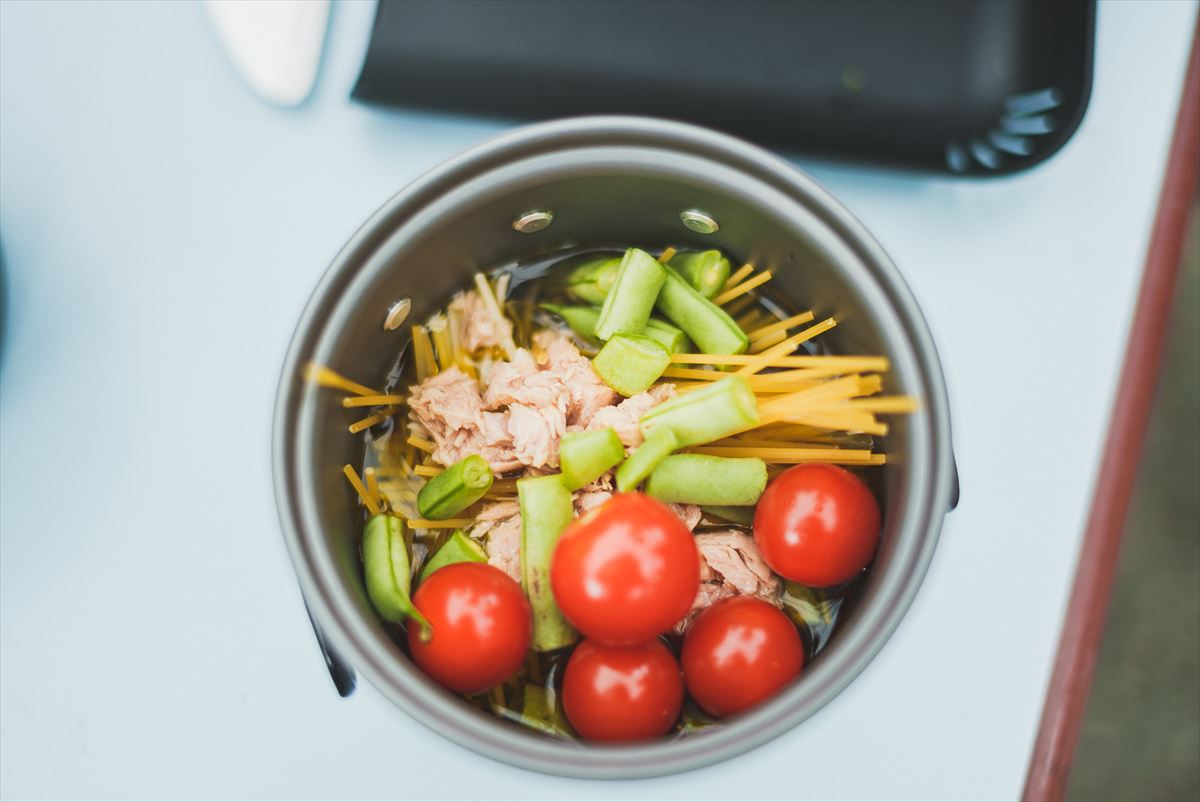
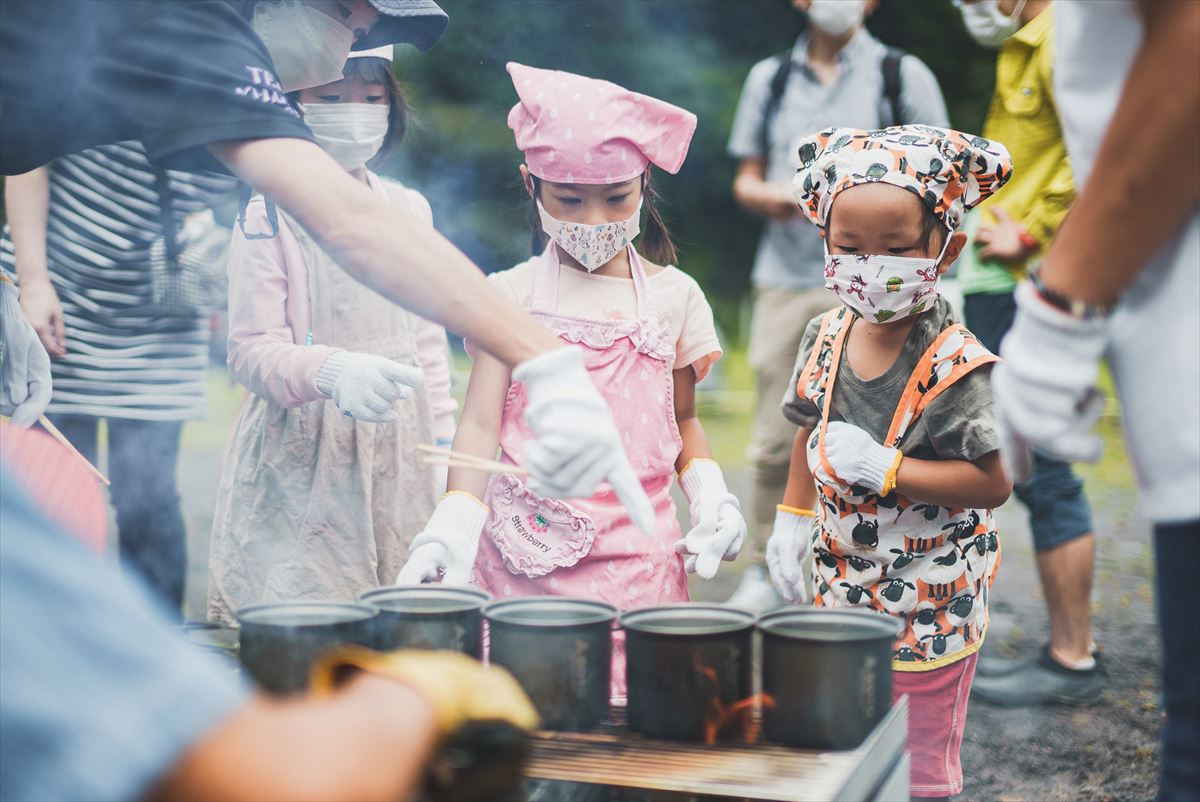
Gradually, a delicious aroma began to waft through the smoke. The dish is ready when the pasta is cooked and seasoned. The children take a bite, each with exclamations of how hot it is! One of the mothers looked deeply moved as she watched her child eat. “This is the first time I’ve seen her eat a tomato.”
Junji took a break as he made an after-meal hot chocolate. “Of course, it tastes better if the sauce and pasta are cooked separately. However, cooking in one pot is interesting, and I see American rationality. It is easy for children to enjoy and is perfect for mountain climbing because you don’t have to discard the cooking water. You can boil down the sauce or eat it like pasta soup. It is also delicious to add eggplant or basil.”
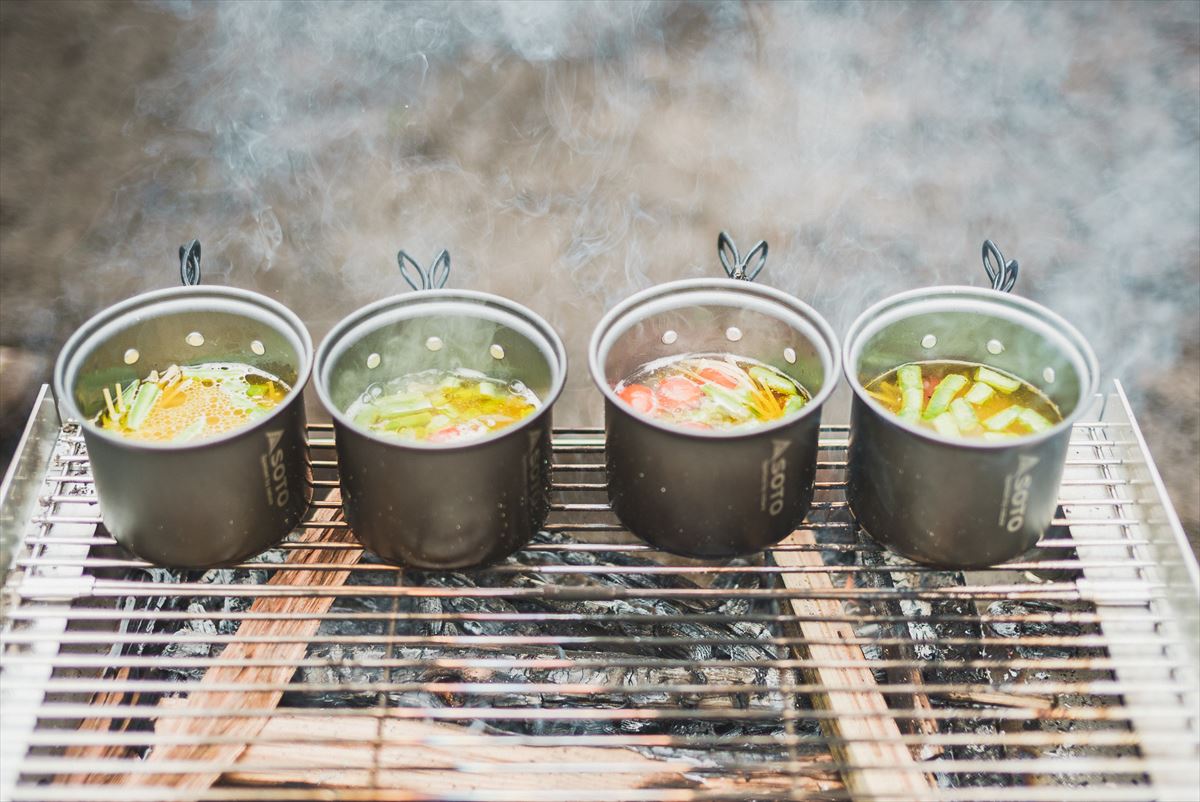
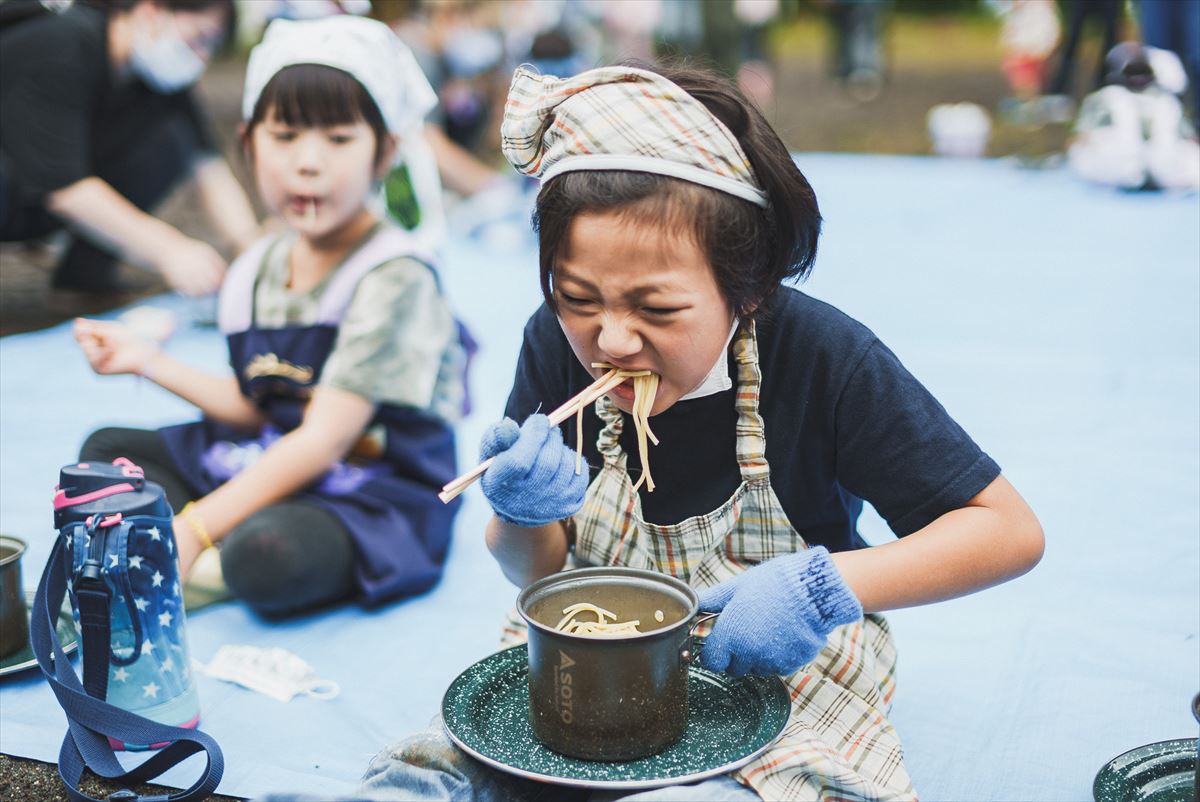
Children make pasta using the pot and knife provided by Junji. It was their first time eating French beans or cherry tomatoes for some children!
In the afternoon, the children made s’mores by roasting marshmallows and sandwiching them between biscuits. Roasting marshmallows over a campfire is harder than it looks. If you take your eyes off for a moment, they can burn, melt and fall. Similarly, searing a block of meat or a rockfish you’ve just caught may seem simple, but it requires skill, which is why it is all the more enjoyable. One of the boys held a stick with three marshmallows over the fire, constantly rotating not to burn them. Junji smiled and cheered him, “I like your skills,” he said. “You look like a great yakitori BBQ chef!”
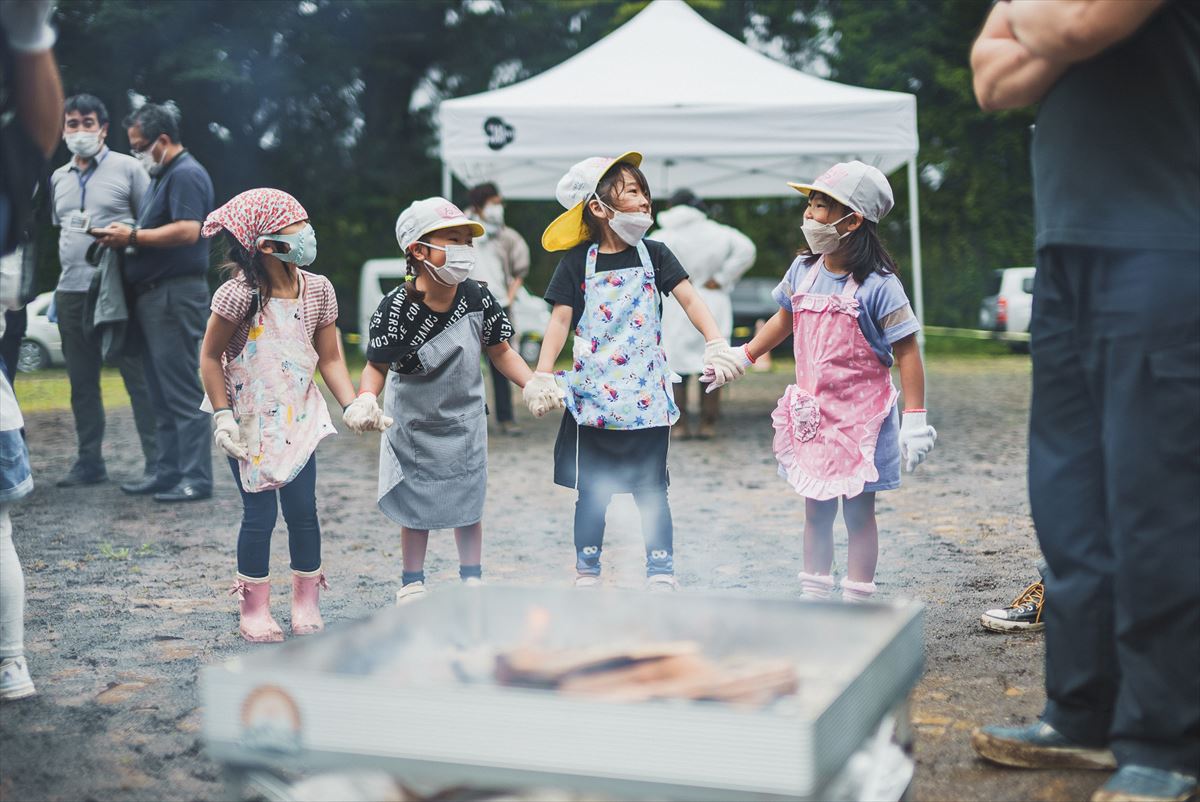

In the afternoon, the children roast their favorite marshmallows over a bonfire. The smell of the bonfire, the sweet aroma, and the cheers of the children fill the space.
Junji kept an eye on the five bonfires, tending to them as they grew. In the past, Junji used to be a kayak guide. After paddling all day, sometimes in the rain, he would gather driftwood, build a fire, make tea, and cook a meal for the participants. He remembers the smiles of relief, which remain his inspiration for his current work.
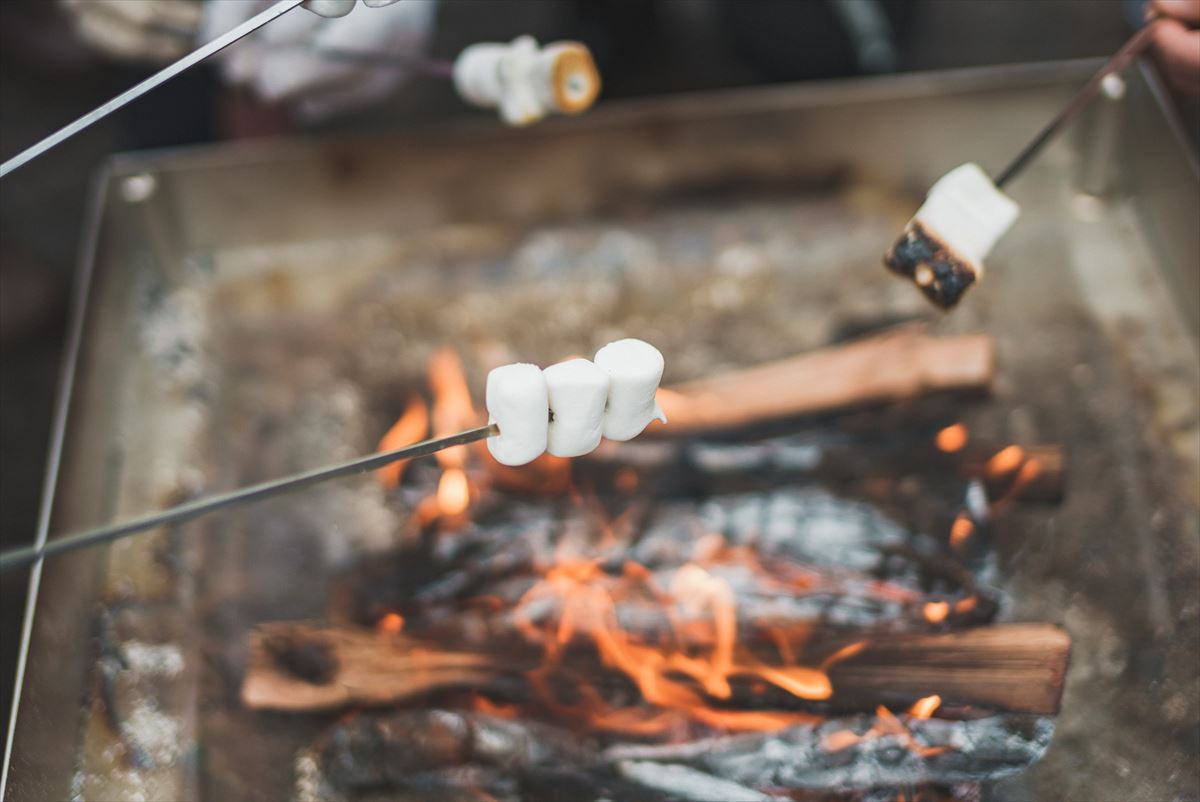
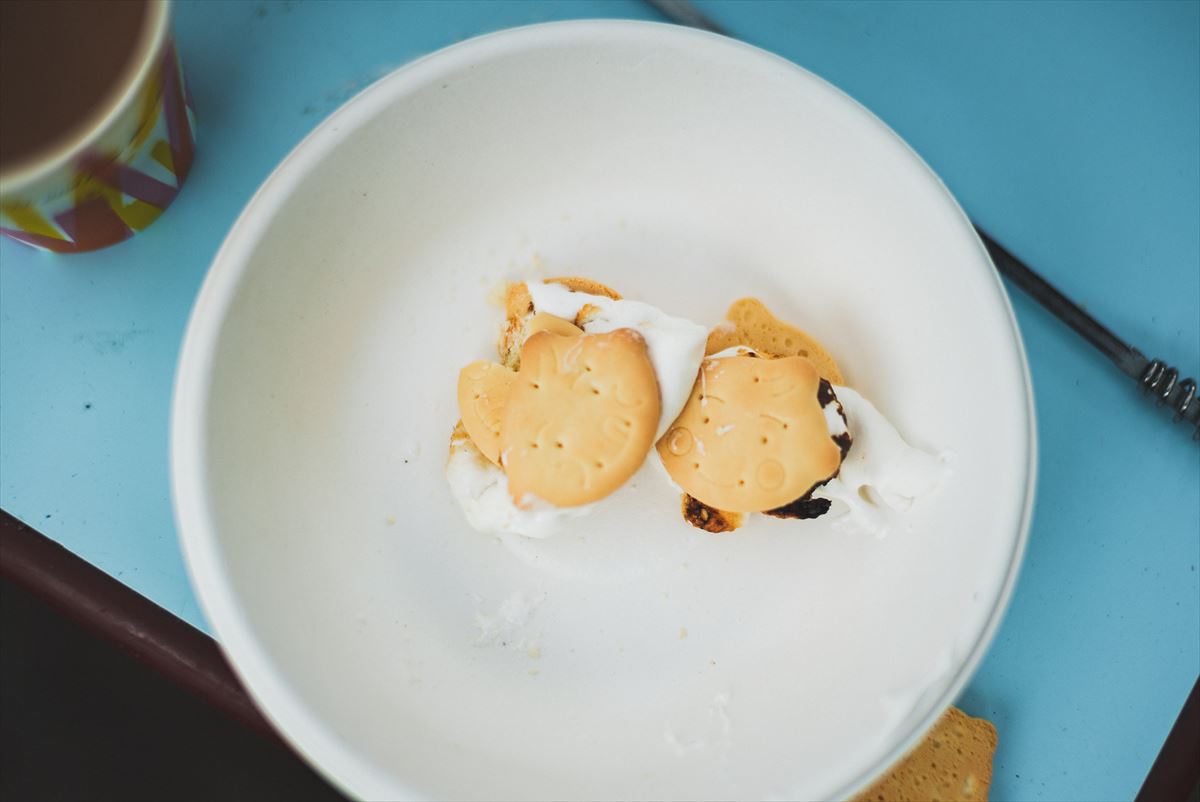
“A campfire is often seen as an extravagant addition to camping, but it is a practical skill that can perform two tasks simultaneously: warming and cooking. That is why I want to pass it on to children.”
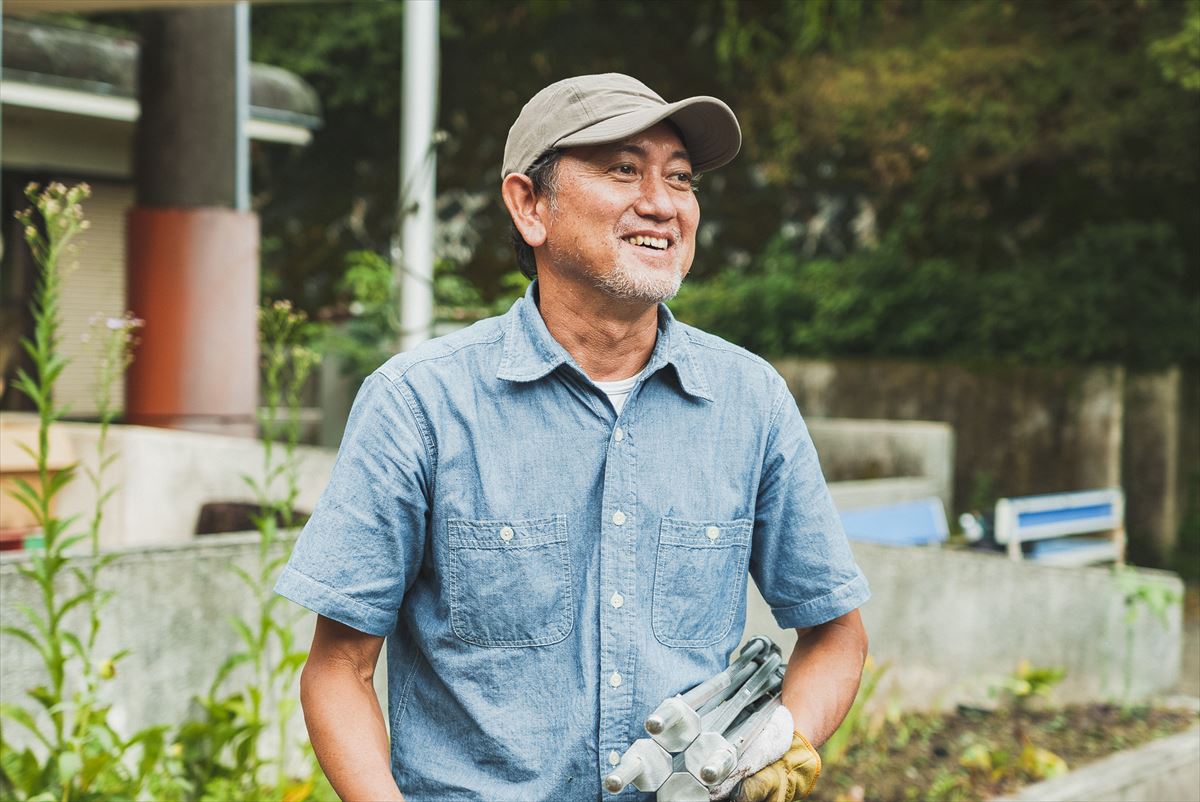
Junji Kosuzume, the bonfire instructor, is the author of many books, including "The Bonfire Cookbook" (Yama-Kei Publishers). “Learning how to handle a bonfire will make your life more enjoyable!”
One of the reasons why we want the children to experience bonfires is because of the slight risk we see in our comfortable modern life. Izumi Satonaka, a teacher at Yumoto Preschool, shared her thoughts. “Children used to automatic toilet flush may not know how to use the lever. Our lives are increasingly automated. We need to create an opportunity to experience traditional methods.”
This sense was shared by other teachers in the area, leading to this event. Initially, I was surprised to hear that a bonfire was possible on school premises. Junko Kanai, also a teacher, said that she wants to make the most of the unique environment of Hakone.
The trend in the world is to “eliminate as many dangers as possible”. This has had a direct impact on children. In such a climate, what can Hakone Town do to help children acquire skills to navigate life?
Junko continued, “I believe the solution is to bring them into contact with nature.” Rather than giving information, we would like the children to have experiences to stimulate their five senses.
“Today, the children have had many sensory experiences– the smell of the bonfire, the smoke that stung their eyes, the warmth of the fire, and not to forget the deliciousness of the cooked food. They shared time with families and children of other preschools. We hope these experiences will enrich their hearts as they grow up.”
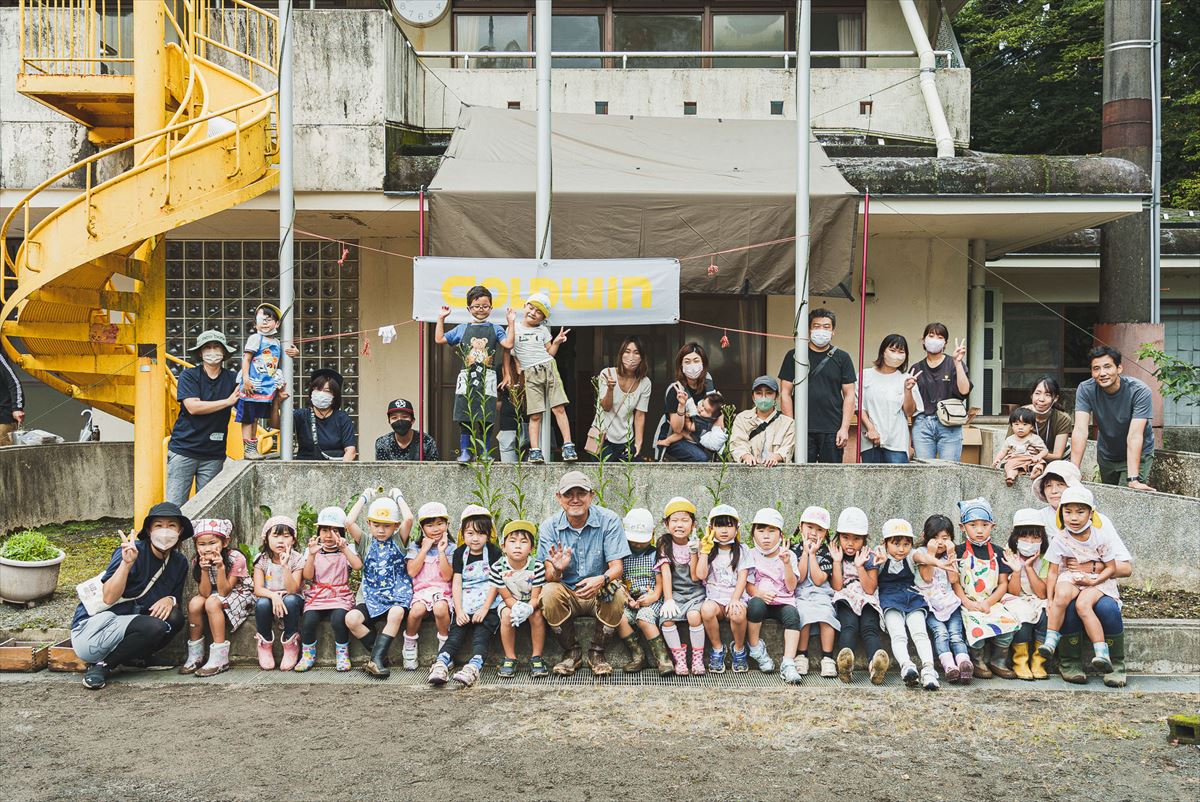
This bonfire event was divided into morning and afternoon sessions, and 44 five-year-olds from Yumoto Preschool, Sengokuhara Preschool, Hakone Kindergarten, and Miyagino Nursery school in Hakone Town participated.
Text=Koki Aso
Photo = Masaya Kudaka
Translation = Asaka Barsley
Direction = Shin Kaneko
Interview support=Hakone Town, GOLDWIN



